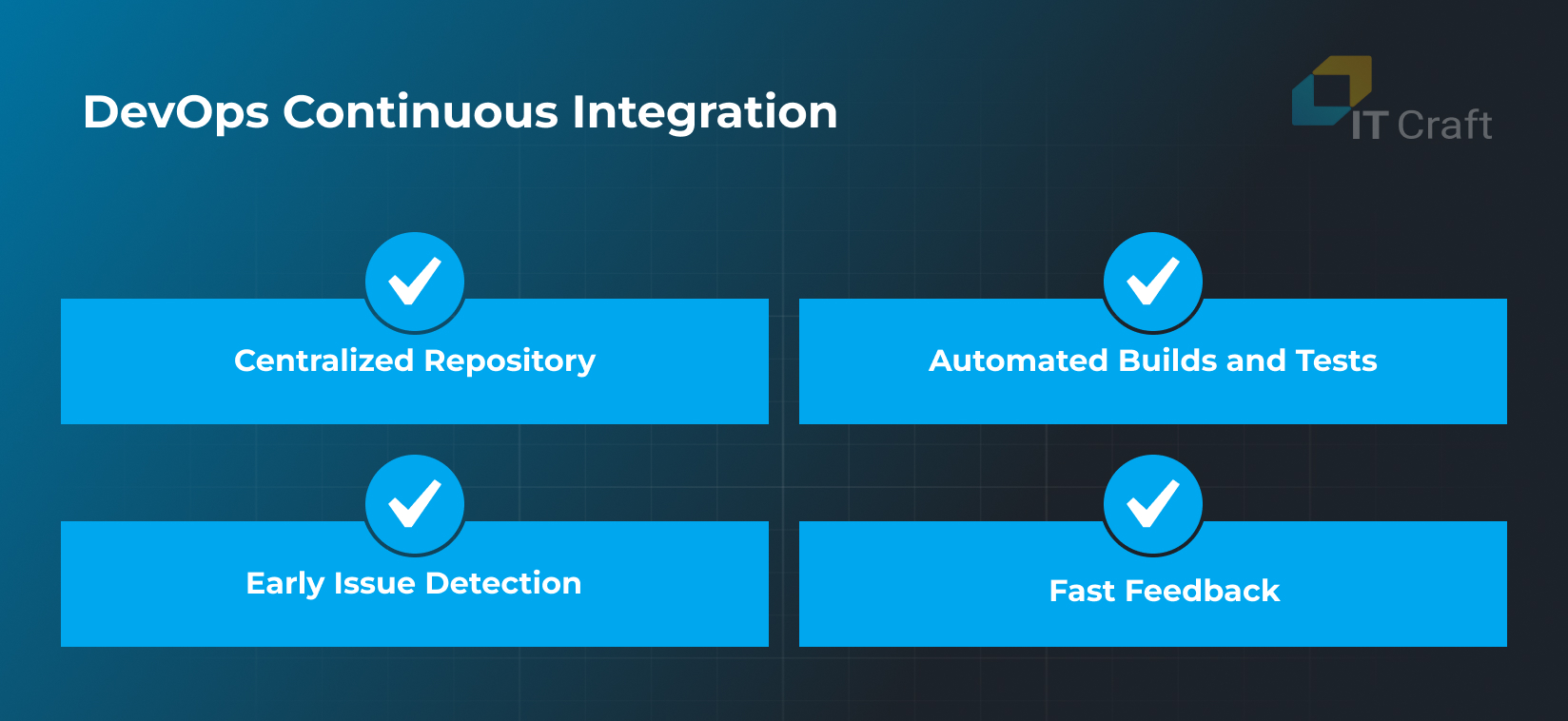Continuous Integration (CI) is a DevOps practice that streamlines code releases by automatically building and testing new source code. An automated pipeline checks code commits and either merges them to the central project repository or alerts developers of encountered problems. It greatly decreases the time needed to validate code updates, ensuring their high quality and reflecting the difference between devops and devsecops.
Key Concepts:
Centralized Repository
Developers work with a shared repository. They use a centralized version control system to commit all code changes, even the smallest.
Automated Builds and Tests
A pipeline is triggered when developers push a commit. It compiles the code. Then, it runs unit and integration tests to validate build stability, a crucial part of DevOps automation.
Early Issue Detection
CI tackles update-related problems immediately (bugs, merge conflicts, and incompatible coding strategies).
Fast Feedback
Developers receive immediate feedback from the system on their commits, which helps them catch bugs and inconsistencies early in the development cycle.

Benefits of Continuous Integration:
Reduced Integration Risks
By focusing on small, regular code commits instead of large updates, developers eliminate merge risks and challenges.
Faster Development Cycles
Build and test automation enables developers to release updates faster by eliminating the long wait for feedback from the QA team and maintenance team.
Improved Code Quality
Developers can identify issues early in the cycle. They can address them immediately, ensuring high software reliability and quality.
Increased Collaboration
The use of CI greatly contributes to a collaborative environment on the project and shared responsibility for project outcomes.
Faster Time to Market
Implementing a CI pipeline allows the project team to release more features within the same timeline, increasing competitiveness and customer satisfaction.
Need help with suboptimal feature deliveries? IT Craft provides DevOps consulting services for companies looking to speed up their development workflow and deliver high-quality features faster.


